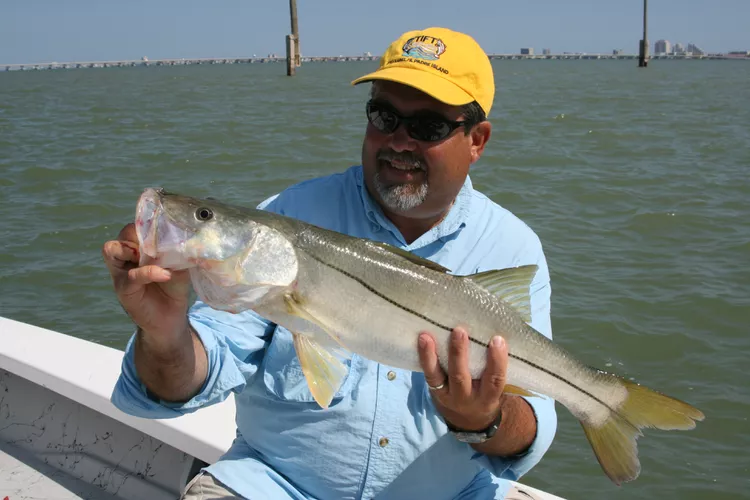Overview of Snook Fishing in South Texas
South Texas is home to a growing population of linesiders.
Believe it or not, very few anglers realize that the Lower Laguna Madre, a bay sandwiched between Port Isabel and South Padre Island, is host to the only viable concentration of snook outside of Florida. Overall, the fish may not be as big or as numerous in South Texas as they are in South Florida, but they are definitely present in fishable numbers.
When and Where to Fish for Snook
Although snook can be caught all year long, they are most consistently taken in late fall and winter. This has more to do with the location of the fish during this time of year than any increase in feeding behavior. As fall turns to winter, snook begin funneling off the flats and leaving the jetties for the insulated comfort of deepwater structure in the Brownsville Ship Channel.
Snook are perhaps the most vulnerable of any Texas gamefish when a frost sets in. However, anywhere along the length of the channel offers sufficient depth to provide protection against fast-moving fronts and dropping temperatures. In addition to deep water, snook crave structure and will seek out docks, pilings, and any other obstruction they can call home.
The fish will most often hold tight to the structure, and therefore require fairly stout tackle. When casting under docks and pilings for snook, try using a 6½ foot medium-heavy rod and 20-pound line. An additional couple of feet of heavier mono should be used as a shock leader. Most situations can be handled with 35-pound test, although larger fish might require 40 or 50-pound shock leader.
How to Catch Snook
Set the drag fairly heavy on the reel and be prepared to thumb the spool on the hookset. It is imperative to get the fish moving away from structure as soon as it hits, and no line should be allowed to slip out until the fish is clear. If the fish manages to wrestle its way back into structure and wraps the line, try giving some slack. Often, this will relax the fish, allowing the angler to work it away from the obstruction. Most importantly, however, is relieving any tension as the line rubs against barnacles and other sharp objects. Once the line is clear, tighten down and try to convince the fish to fight in open water.
Fighting the fish is just one challenge. Getting them to strike is another. Again, concentrate your search on visible structure. Snook prefer to sit inside or under docks, bridges, and other structures. Here, they will ambush shrimp and baitfish. Skipping finger mullet or jumbo shrimp will draw plenty of strikes.
However, artificial lures will see plenty of action as well. DOA Lures makes two products that are perfect for this scenario: the Baitbuster, a slow-sinking mullet imitation, and the TerrorEyz, a fast-sinking, soft-plastic minnow replica. Each of these baits sports a single hook, making them easy to work in tight cover without hanging up. Soft-plastic jigs and mullet-imitating plugs such as MirroLures and Rattle Traps will also tempt their share of snook.
Snook are excellent table fare, and the state of Texas allows a single fish bag limit, with a 24 to 28-inch slot. However, with their numbers still relatively low, and given their penchant for dying in mass numbers during cold weather, it is best that all fish be returned to the water. They are easily handled by grabbing the lower lip, just like a black bass in freshwater, and can be unhooked and released with minimal stress.





